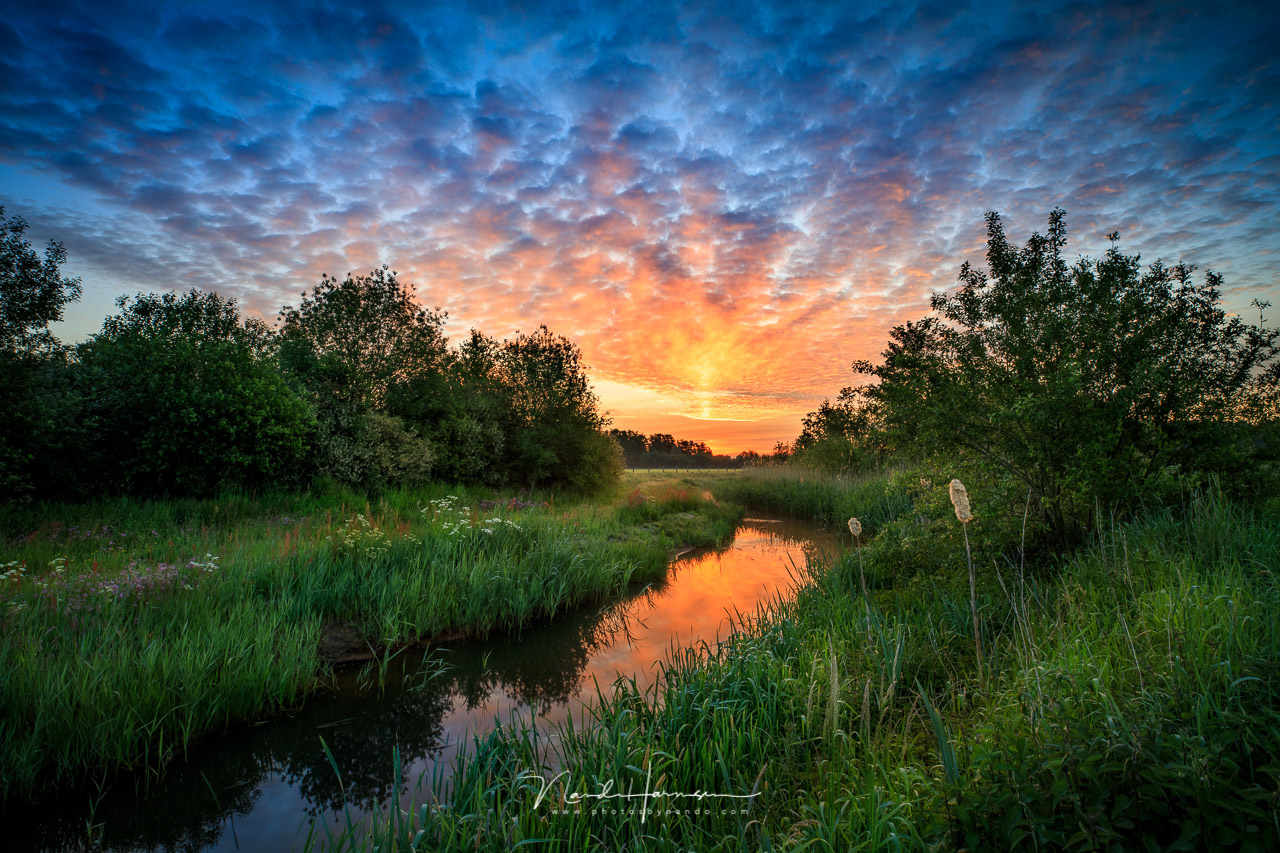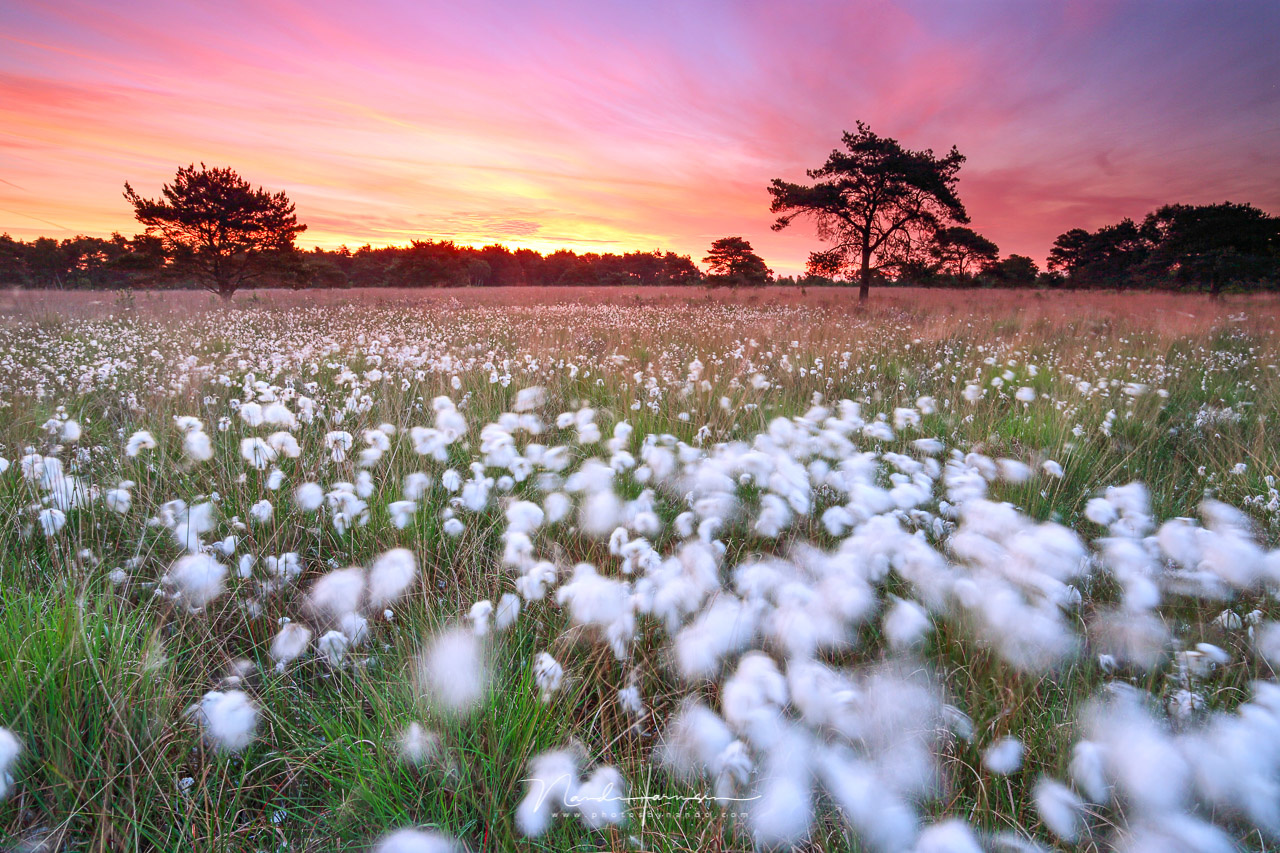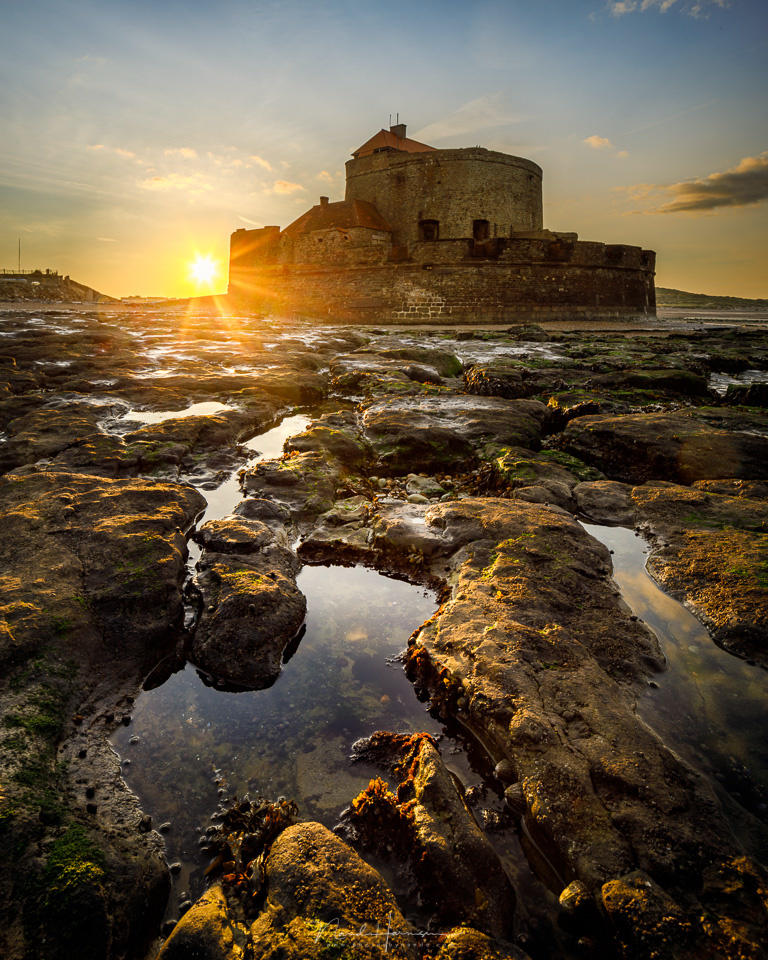When the dynamic range of a scenery is very large, it might be necessary to use some kind of trick in order to keep it inside the histogram. At least, if you want to prevent pure white or black in the picture. Some use filters, others use bracketing. But why not use both?
For the photographers who don’t know, the dynamic range of normal daylight scenery can reach up to 18 stops. That is the equivalent to approximately 100,000 luminosity levels between pure black and pure white. That is what I have learned and if I am mistaken in some way, please let me know.
Those 18 stops is more than normal camera sensors can record. The best on the market at this time will be able to go up to 14 stops, perhaps a bit more. But the majority of sensors can record up to a maximum of 12 or 13 stops, which is a lot also.

Neutral density gradient filter are not a new phenomenon. In the early days of photography Cokin came up with the revolutionary idea of these filters. Here you see my old Minolta X-500 with Cokin filters, and the brand new Canon EOS R with the Haida M10 filter system
There are a few restrictions to it. You will need to shoot in raw file format, and your camera will need 14 bit depth in order to be able to record that many luminosity levels. You will need to push down the bright levels, and pull up the dark levels in post-processing a lot to make it visible. The possibilities and results can be truly amazing. But there are also downsides to this kind of image recovery.
When pulling up the darkest parts of an image, a lot of noise may occur. The more you recover the blacks, the more prominent noise will become. That is why it is best to expose to the right, in order to maximize the amount of detail in the darkest parts of the image. At the same time it is important to prevent the highlights from clipping. Because that is never recoverable.
High Dynamic Range in Landscape Photography
Yes, this is mainly about the dynamic range of landscapes. Depending on the moment of day, and the weather conditions, these scenarios can have the large dynamic range I mentioned previously. In the worst case scenario it can reach up to 18 stops. This basically means you will have 4 stops short when you use a camera with 14 stops of dynamic range. The resulting image will have pure white in it, or pure black, or both. Especially for landscape photographers this is often an unwanted situation.
Fortunately there are solutions available for these situations and I guess we all know about these workarounds. Let me mention every solution, together with its downsides.
Solution 1: Use Your Sensors’ Dynamic Range

For this shot I used the dynamic range of the camera. (Canon EOS 5D4 TS-E 24mm - ISO100 - f/11 - 15 sec)
This is something that is perhaps the most obvious one. By an exposure to the right, the maximum amount of dynamic range can be captured. It will need a significant recovery of the shadows, but if performed well, you can get up to 14 stops of dynamic range in one single shot.
The downside is the risk of increased noise in the recovered dark areas. Even with the very well performing Sony a7R III it will show a very noticeable amount of noise. Also the scenery can have more dynamic range than the camera is capable of, resulting in pure white, or pure black. So this solution has its limits, depending on how the camera is performing and what you are shooting.
Solution 2: Use a Bracketing Series

The use of bracketing allowed me to capture the complete dynamic range of this moment. It is merged with Lightroom to produce this image. (Canon EOS 5D4 EF16-35L @ 16mm - ISO100 - f/11 - 1/2 sec up to 1/125 sec)
A bracketing series is a certain number of photos with different exposures. Most photographers are familiar with it. This solution makes it is possible to capture a limitless dynamic range. In theory that is. With a series of 5 images with one stop increments, together with the dynamic range of the camera, you should be able to capture the 18 stops dynamic range of a bright sunny day.
Even with bracketing, you have to rely on the dynamic range of the camera. It will explore the limits of the sensor, thus increasing the risk of noise in areas that were initially are very dark. But compared with the first solution, it will have a tremendous increase in image quality. Of course you can increase the amount of images in your bracketing series, but it has to be workable. It is no need to shoot more than necessary.
Solution 3: Use Gradient Neutral Density Filters

For this landscape I used a Lee 1,2 hard gradient neutral density filter. It allowed me to capture the moment, but it left the trees on the horizon dark. (Canon EOS 5D3 EF17-40mm @ 21mm - ISO100 - f/11 - 10 sec with Lee 4 stop hard gradient filter)
The use of gradient neutral density is not everyone’s cup of tea. But if you love using gradient neutral density filters, you are able to reduce the amount of light in a part of the scenery, thus decreasing the dynamic range. Filters can reduce up to 4 stops of light, and even more when filters are stacked.
For this method you will need to make a relatively large investment. Filters are expensive, and it can be a hassle to bring those along. It also takes a lot of time to setup. At least, more time than a bracketing series, for instance. But the real downside of filters is the straight line of the gradient. Whenever mountains or trees break through the horizon, these will be darkened also. Even with rotating the filter, the gradient will almost never follow the lines of the landscape.
Solution 4: Why Not Combine Bracketing and Gradient Neutral Density Filters?

Shooting landscapes with the Haida M10 filterholder and a Red Diamond gradient filter. Why not shoot in bracketing also?
Every solution I mentioned so far, works in a lot of situations. It also has its downsides, as I described. Perhaps you can come up with a few others also. But why not use filters and bracketing at the same time? I started to combine both ways after I noticed how each of the solutions on its own did not have the results I wanted. Bracketing gave me to much risk in increased noise levels, while filters had the problem of a straight gradient.
By using a gradient neutral density filter, it is possible to reduce the amount of dynamic range in a scenery up to three or four stops. But together with bracketing, you don’t have to use the darkest gradient filter anymore. Just by reducing the amount of light by one or two stops it is no longer necessary to go into extremes with bracketing. Just use a gradient filter to reduce the brightest part of the image, and shoot a bracketing series to capture the remaining dynamic range.
This way you prevent too much darkening in objects that break through the gradient of the filter. At the same time you prevent the necessity to go into extremes with bracketing. It will reduce the risk of too much noise.
Use the Strengths of Each Method and Avoid Its Weaknesses

For this vertical panorama I used a gradient filter and used bracketing also. It allowed me to capture the landscape in the best possible way (Canon EOS 5D4 TS-E 24mm - ISO100 - f/16 - 1/15 sec up to 1/500 sec with Kase Wolverine 0,9 medium gradient filter)
Perhaps you prefer dealing with with large dynamic ranges by bracketing. Or perhaps you really hate bracketing and prefer the use of filters. You may have your own personal reason to use one way instead of the other. But I believe there is no need to stick with one and ignore the other. Why not use the strengths of both ways? It is the final result that matters, and you can use whatever solutions you like. In the end I think combining gradient neutral density filters and bracketing makes it more easy to shoot the picture you want.
What do you think about capturing a scenery with the complete dynamic range intact? What solution do you have for getting the result you like? Do you use filters, or bracketing? Or both? Or perhaps a method I did not mention? Please share your thoughts in the comments below. I am looking forward to your reply.







May I ask you to clarify -- if you combine bracketing and the use of a gradient filter, would you use the filter on each shot in the bracket, or only in certain ones, and remove the filter for others?
Good question.
I place the filter or filters of choice, and use those for each shot.
But it would be possible to change filters inbetween shots also.
Thanks for sharing. I am excited to try this. To make sure I understand correctly. Are you still exposing to the right even when bracketing? I’m getting familiar with using the histogram when adjusting the exposure level. I know you said not to clip the highlights, but does this mean you aim to have the highlights on the very edge of the right side of the histogram or are you aiming more for something like 90% and turning on the camera bracketing? Also, both of my cameras offer +1,2, or 3 bracketing, which one do you tend to use or recommend? Thanks!
With bracketing there is no exposure to the right. You will make a series of exposures that covers the complete dynamic range.
Exposure to the Right is only when you shoot one single exposure, with or without bracketing.
So my recommendation:
if you only want to shoot a single photo with the maximum amount of image data, use exposure to the right.
If you want to be sure to cover the complete dynamic range in a high dynamic range situation, you might want to use bracketing.
I use the Lee 100mm system when shooting my a7’s. I prefer to do things “in camera” as I don’t like to spend hours at the computer. One thing I want to try is to shoot in S-Log. I shoot a lot of HD video, I don’t see why it wouldn’t work shooting stills.
If you use the raw file format, it doesn't has any use shooting S-log. S-log is a sort of raw for film.
But I did wrote an article about the use of picture styles for judging a photo on camera. Perhaps that is interesting for you https://fstoppers.com/education/consider-using-flat-picture-profile-when...
Thanks, I'll give these techniques a try.